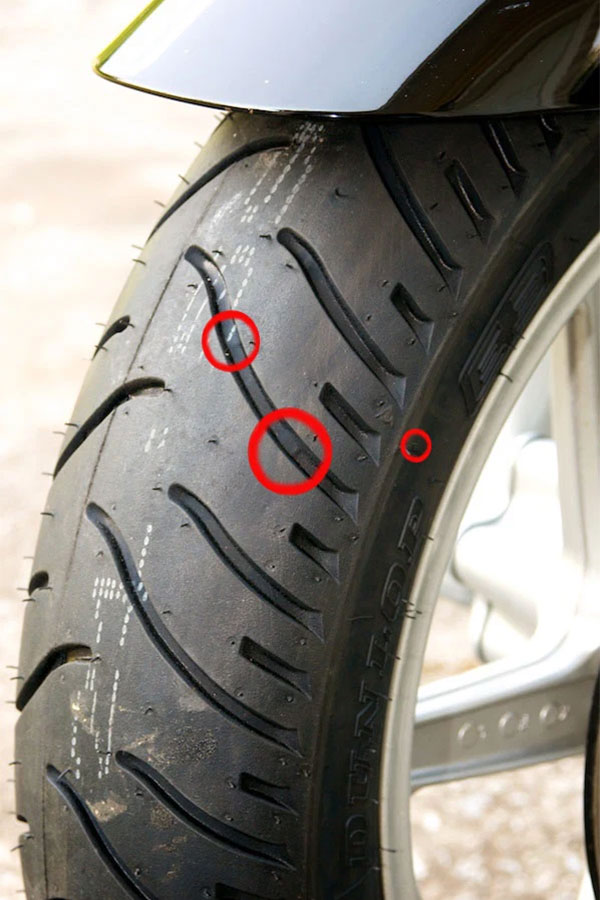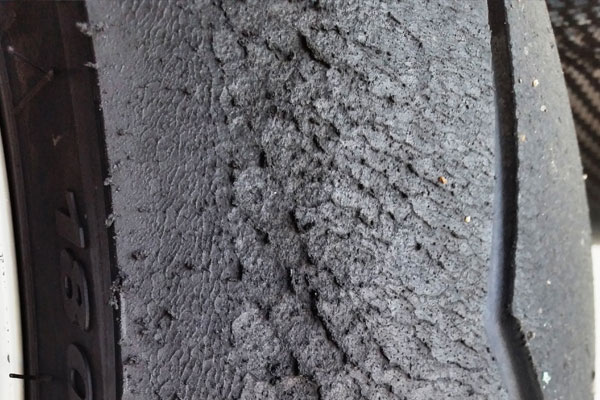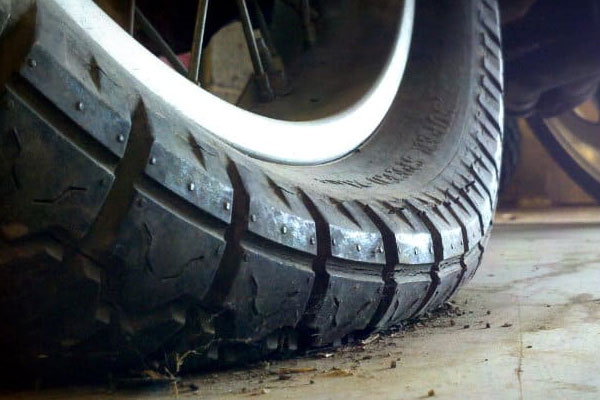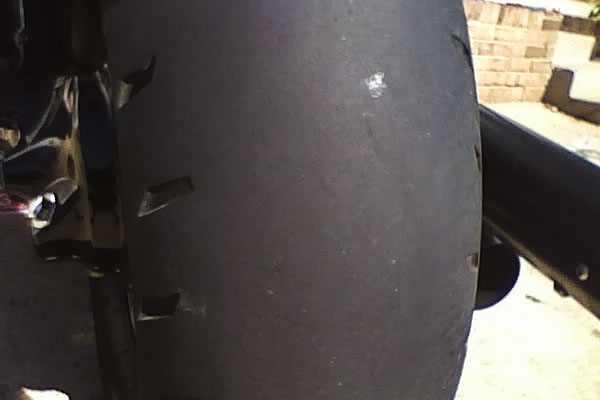
We all know that riding on worn-out tyres is dangerous. In fact, some reports have shown that tyre-related problems like degradation and insufficient tread depths can cause accidents. Yet, a recent survey showed that 29% of 1,157 Australian respondents are using unsafe tyres and 48% are postponing buying new tyres because they find their tyres still usable.
On average, your tyres should last around 5 years, however, other factors can wear them out faster, such as riding style, speed, load, tyre pressures, and suspension set up. Even if you have only been using your tyres for 1 year, they may already show some signs that you must replace them – now.
Regularly checking your tyres for wear will ensure your optimum riding performance and more importantly, put you and other motorists out of harm’s way. The next time you conduct a tyre inspection, watch out for these five signs that show you already need to replace your tyres!
1. General tyre wear
Motorcycle tyres have a built-in Tyre Wear Indicator (TWI) mark located on its sidewall. Whenever you use your tyres, their tread area will become shallower until it reaches the TWI mark. When it comes to that point, it’s time to buy a new set of tyres.
Tyre wear can affect your balance and stability while making manoeuvres. Over time, your tyres will start to lose its shape due to bald spots, odd patches, one-sided wear, or worn-out edges on the tread area. These tyre wear patterns can also weaken the grip and traction capabilities of your tyres, giving you a difficult time stopping on a wet road.
With that said, we recommend inspecting your tyres once a month or before and after taking long motorcycle road trips to check for any wear patterns, cracks, cuts or deformations.

2. Unusual tyre wear patterns
An unusual wear pattern is often one of the early indicators that you have mechanical issues or that you have an incorrect bike setup.
High tyre pressure
For example, a pattern in the centre of the tyre indicates that you are using too much air pressure.

If the pressure is too high, the contact patch of your tyre shrinks and the centre is forced to carry the entire weight.
An overinflated tyre has a higher risk for a blowout, which can make your motorcycle unstable and unsafe.
Low tyre pressure

Conversely, low tyre pressure can cause bald spots on the outer edges of your tyre, as the contact patch widens and the edges carry the weight. Additionally, if the pressure in the tyre drops quickly after refilling it, bring it to the nearest service centre to check for any leaks.
Tyre cupping
Another unusual tyre wear pattern you should keep an eye on is the cupping of the tyre. This type of wear pattern may indicate loose suspension parts, worn shock absorbers and unbalanced tyres.
For example, worn shock absorbers can cause your tyres to move excessively instead of damping spring oscillations to control tyre movement. When there’s too much tyre movement, this pattern can appear on the tread.
3. Insufficient tyre tread depth
Research shows that 80% of auto-service technicians cite bald tyres as one of the reasons why vehicles end up in a workshop.
Riding on bald tyres on wet road conditions can cause accidents, as riders have a difficult time controlling their motorcycle when they stop abruptly.
Tyres with a worn-out tread cannot provide enough grip and traction to allow you to move, steer, slow down and stop safely. Therefore, the shallower your tread becomes, the more you’re at risk of losing control of your motorcycle.
In Australia, the minimum legal tread depth is 1.5mm. Tread depth is the distance between the top of the tyre and the bottom of the grooves. New motorcycle tyres come with 8mm tread, but as they are used, rubber is lost.
The best time to replace your tyres is when the tread gets to 3mm. Don’t wait until the wear indicators show you there’s less than 1.5mm of tread left on your tyre, as riding on excessively worn-out tyres is an accident waiting to happen.
Vehicle crashes can increase by as much as 26% when the tyres have insufficient tread depth.
Tyre wear indicator
To check your motorcycle tyre’s tread depth, inspect the built-in wear indicator bars (if there’s any) in your tyre tread. If the bars are no longer visible, replace your tyres.
For tyres marked only with a Tread Wear Indicator on the sidewall, simply check if the tread is on the same level as the TWI. If it is, it’s time to get new tyres.
Once your tyres begin to show unusual wear patterns, it’s best to talk to a mechanic to find out the possible mechanical issues behind it. Of course, tyres that look excessively worn-out should be replaced immediately.


4. Punctures, cuts or sidewall bubbles
Damaged motorcycle tyres are unroadworthy. You should never ride a motorcycle with punctured tyres, or tyres with cuts or sidewall bubbles, no matter how small they seem.
If the situation calls for temporary fixing of a small cut because you’re in the middle of nowhere, you may use a tyre repair toolkit. But remember that it’s only a temporary solution, so make sure that you replace it with a new tyre before you go back to your usual motorcycle routine.
Sidewall bubbles or bulges are another sign of physical damage on tyres. It is commonly caused by driving over speed bumps or curbs aggressively or crashing into a post. Upon impact, the carcass and inner liner of the tyre may dismantle, causing a prominent bubble or bulge on the sidewall.
You cannot repair any damage to the sidewall as removing any sections from the tyre tread increases the risk of tyre failure. You would need to replace the damaged tyre as soon as possible.
5. Tyres don’t fit your bike or riding style
This may seem obvious, but some riders don’t know how to choose the right tyres for their motorcycle and riding style, including 7% of Australian riders who admitted to buying the wrong tyres.
When buying new tyres, follow the minimum legal requirements (e.g., tyre pressure and tread depth) in your city. Motorcycles also come with a set of tyres that features a unique tread pattern to ensure your maximum safety and performance.
If you bought street bike tyres for your cruiser bike, replace it with the recommended tyres for cruiser bikes instead. Tyres that have tread patterns or designs not suited for your type of motorbike might affect your stability and overall riding performance.
Final thoughts
Once you see any sign of physical damage and unusual wear or tread patterns on your tyres, do not postpone replacing them with brand new ones. Just make sure that the replacement tyres you’re getting meet legal requirements in your state, and are suited for your motorcycle and riding style.

